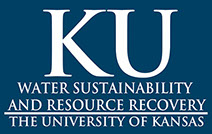Determining the Fate and Major Removal Mechanisms of Microplastics in Water and Resource Recovery Facilities





Microplastics
Extraction of microplastics from wastewater
Microplastics
Obtaining wastewater samples for microplastic extraction
Obtaining wastewater samples for microplastic extraction
4 - 5
<
>
Plastic debris has become a major and growing global pollution problem as it ends up in aquatic environments where the large and coarse plastic fragmented divided into smaller fragments (microplastics) under environmental conditions. Microplastics are defined as plastic pieces smaller than 5 mm in size and has major environmental consequences. But knowledge about microplastics is still very fragmentary. Special attention has been given to identify the sources of microplastics. Wastewater treatment plants (WWTPs) have been described as a point of source for microplastics, but there is little information regarding the fate of microplastics inside the WWTPs itself. Dr. Sturm together with Dr. Edward Peltier was awarded a NSF grant to study the impact of microplastics.
In this project, we want to determine whether WWTPs acts as a multiplier or decrease microplastic load from the effluent. We hypothesize that activated sludge in WWTPs harbor microorganisms capable of plastic degradation and actively participate in degrading some portion of the microplastic contamination. We want to determine the fraction of microplastics degraded by the microbial population and the mechanism of the degradation. We’ll also test the effectiveness of absorption by activated sludge and physical screening in WWTPs on microplastics removal. Based on the obtained results, we’ll be able to formulate an effective mitigation-measure strategy for microplastics.
Research Team
Funding
National Science Foundation
Dr. Belinda Sturm
Principal Investigator
Dr. Edward Peltier
Co-Principal
Investigator
Dr. Samik Bagchi
Research Associate
John Handley Masters Student
Tyler Mayo Masters Student
Juan Pablo Ramirez Mantilla Undergraduate Researcher



